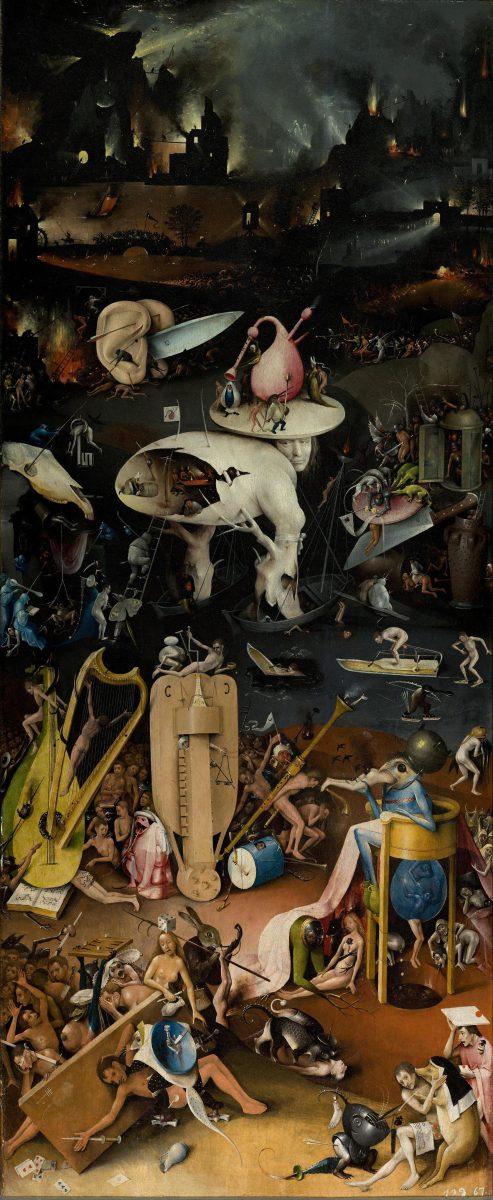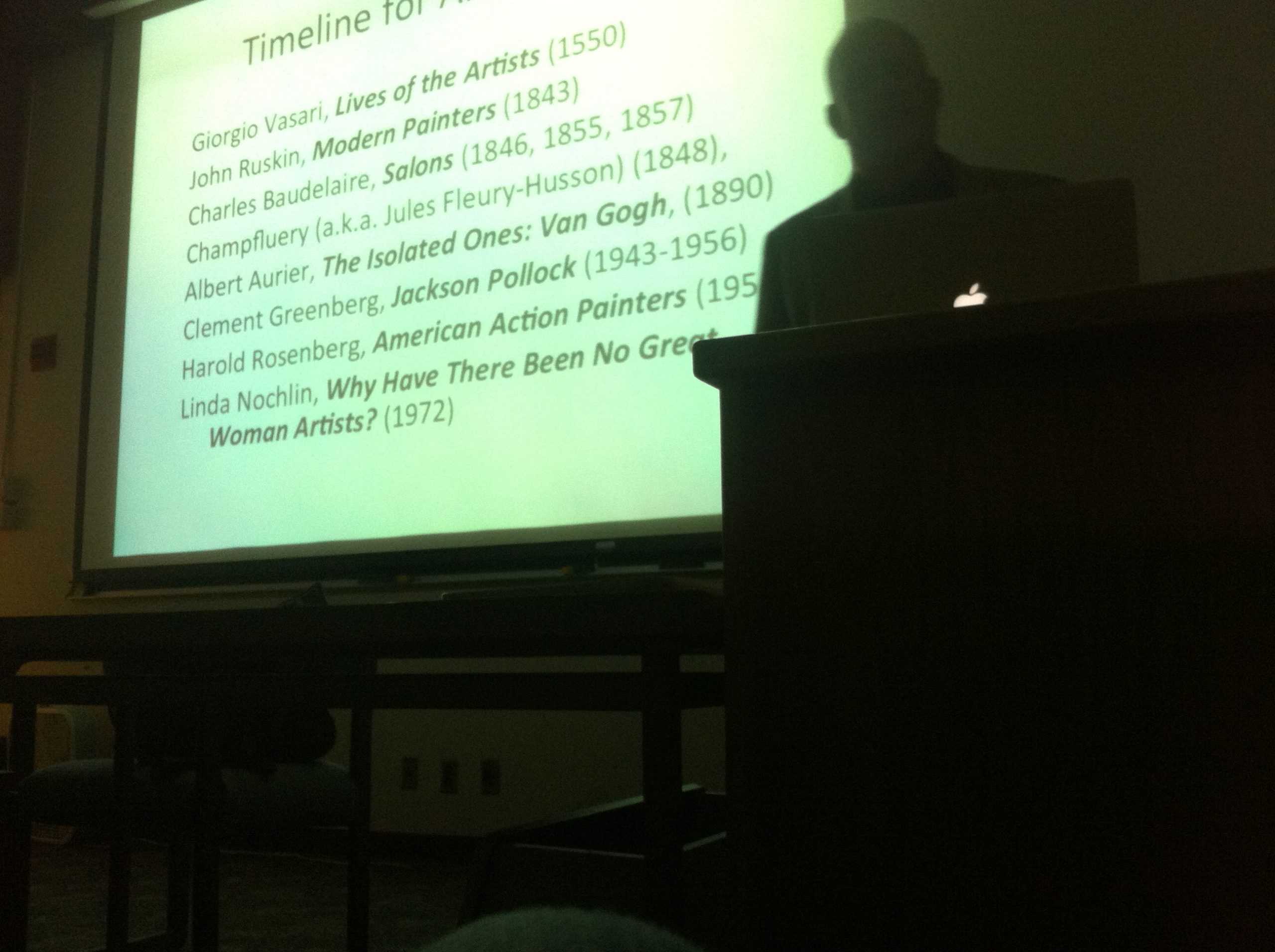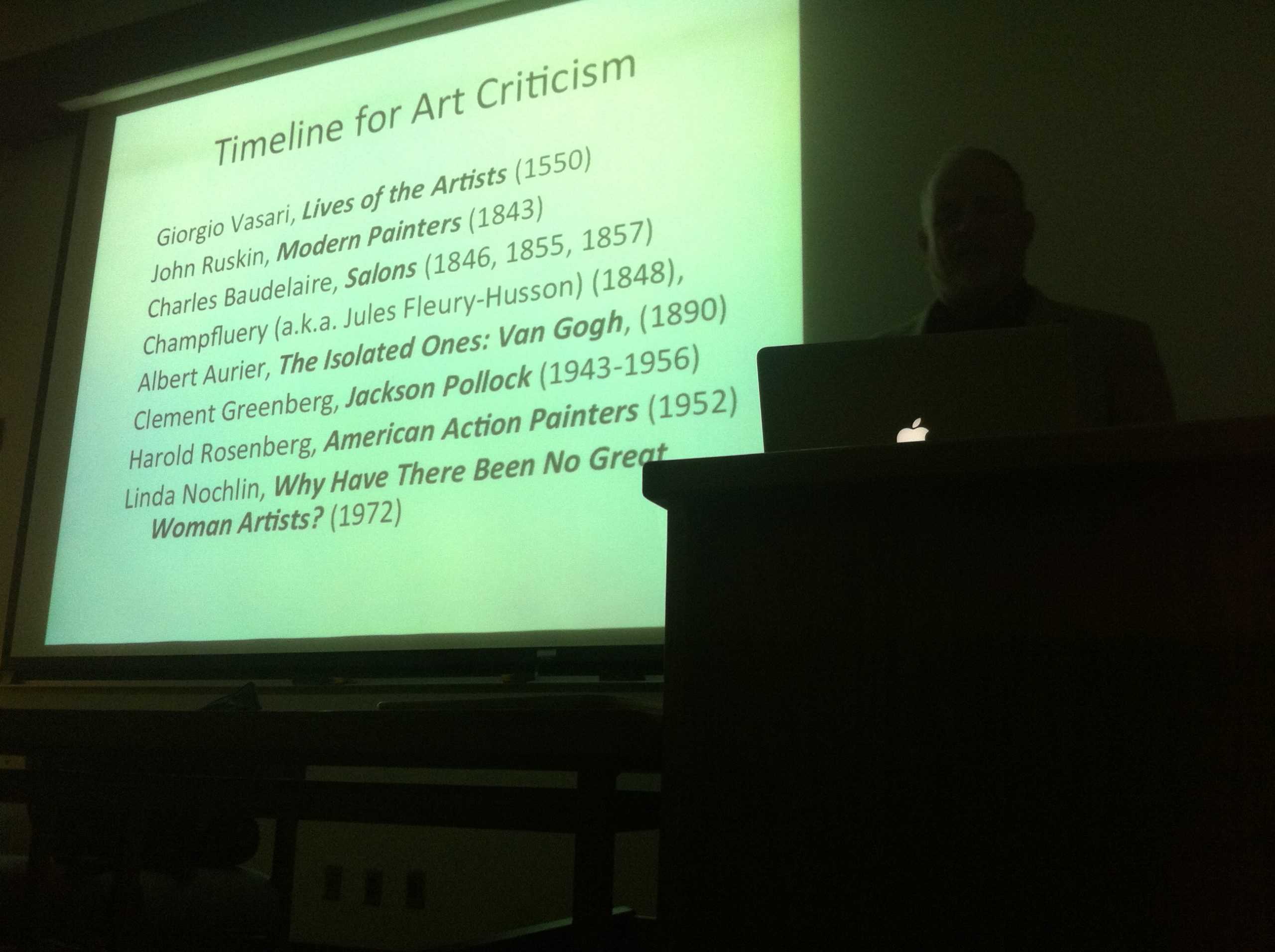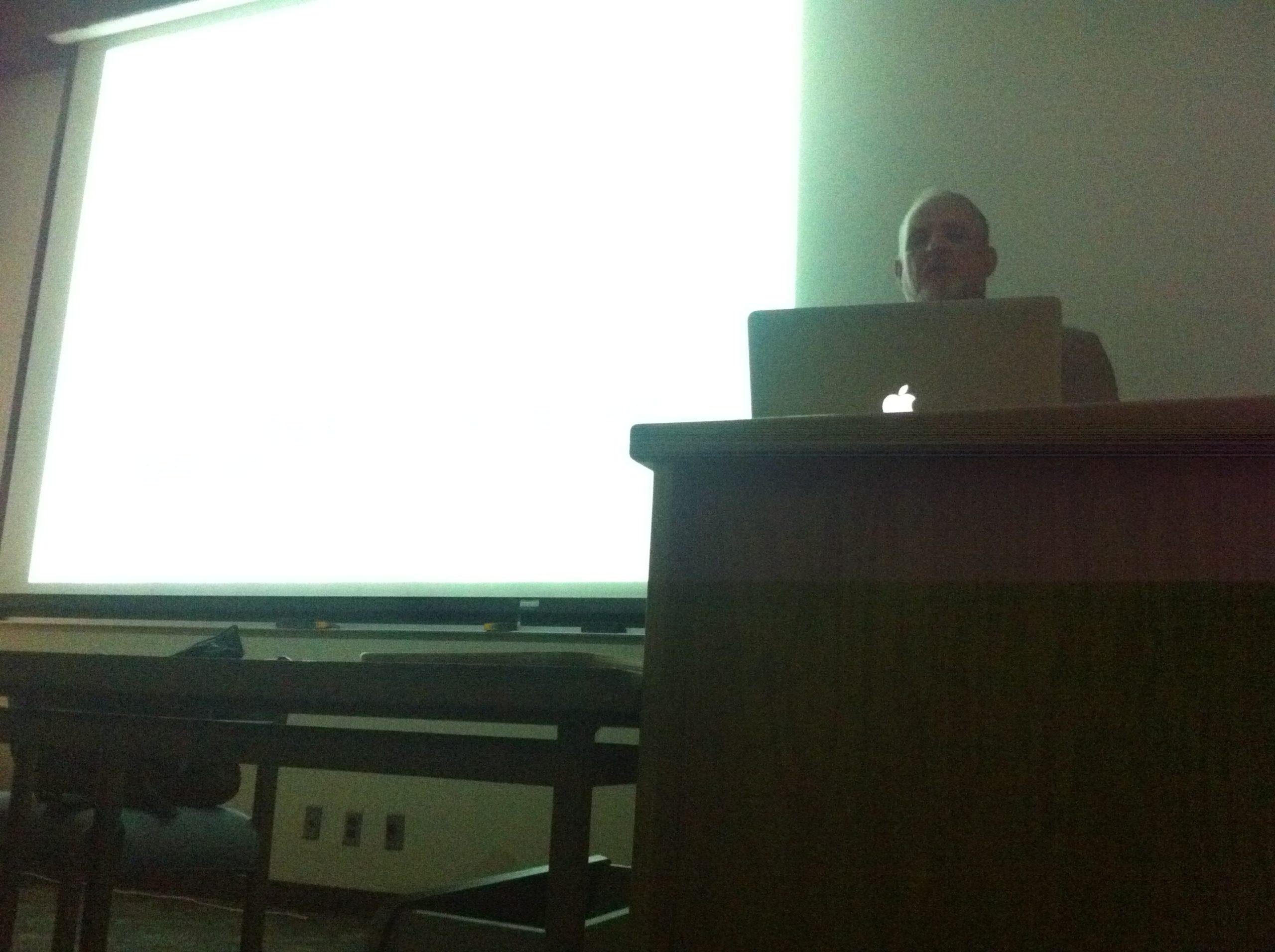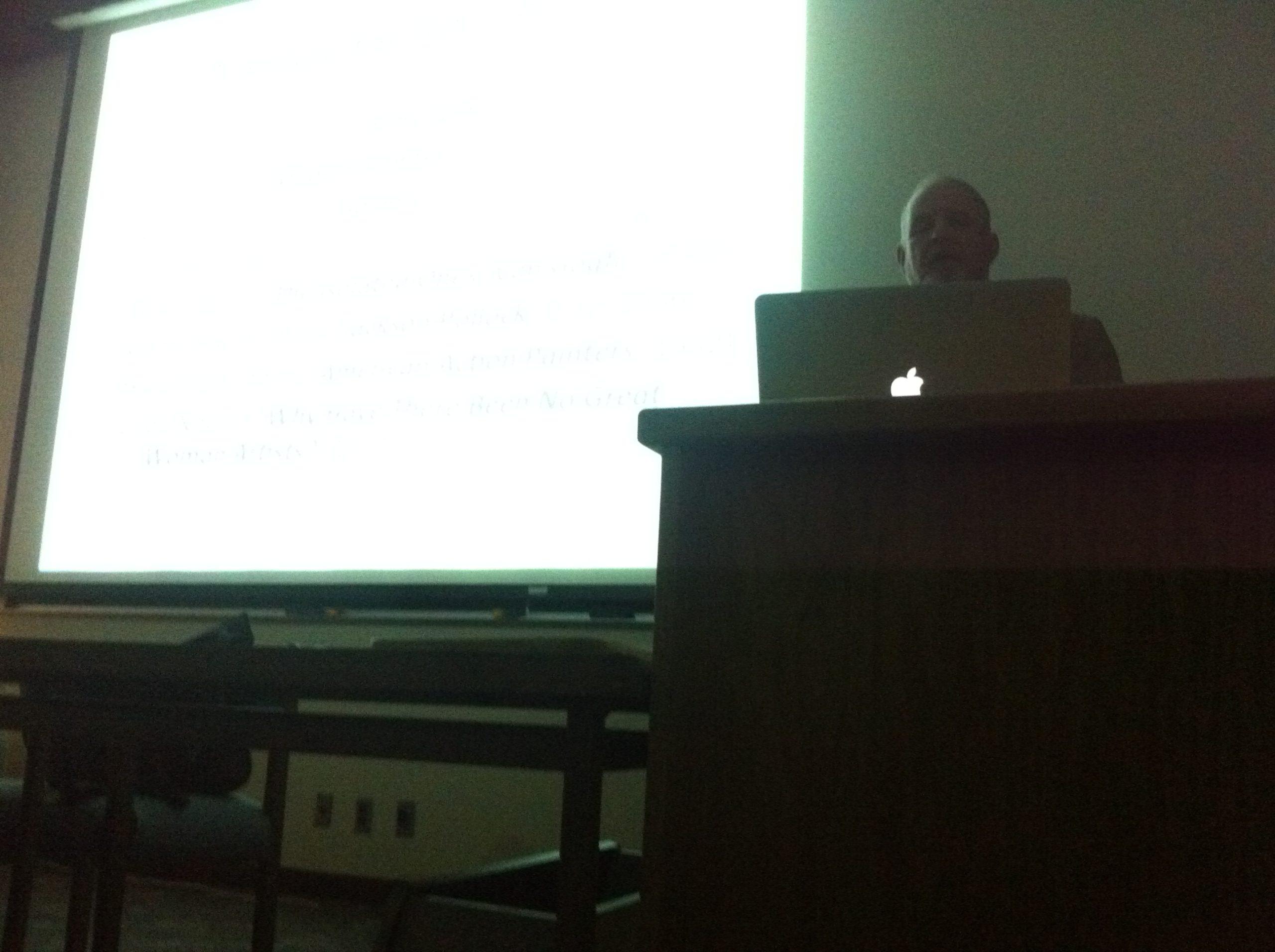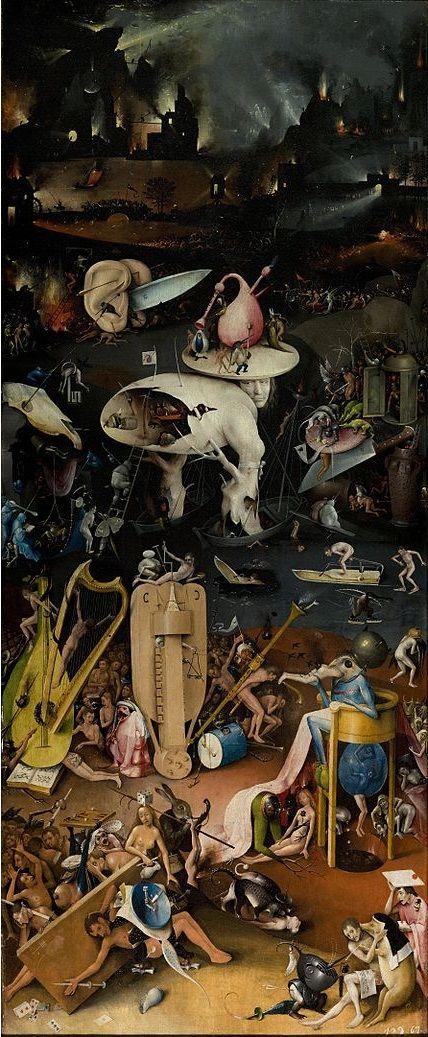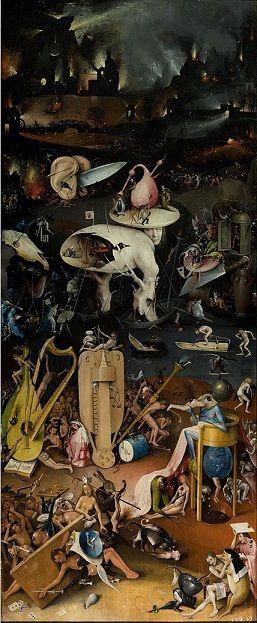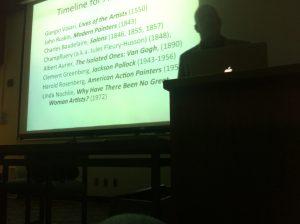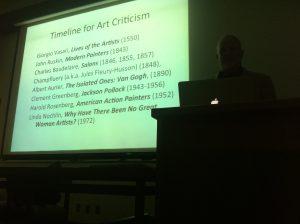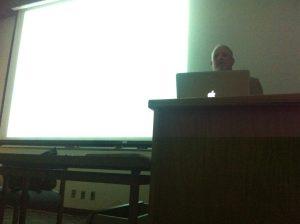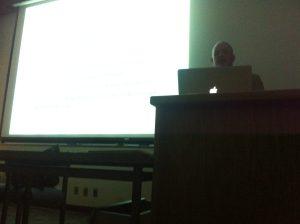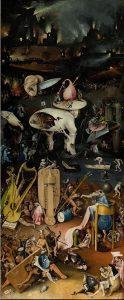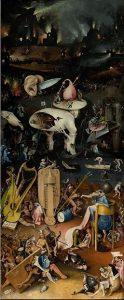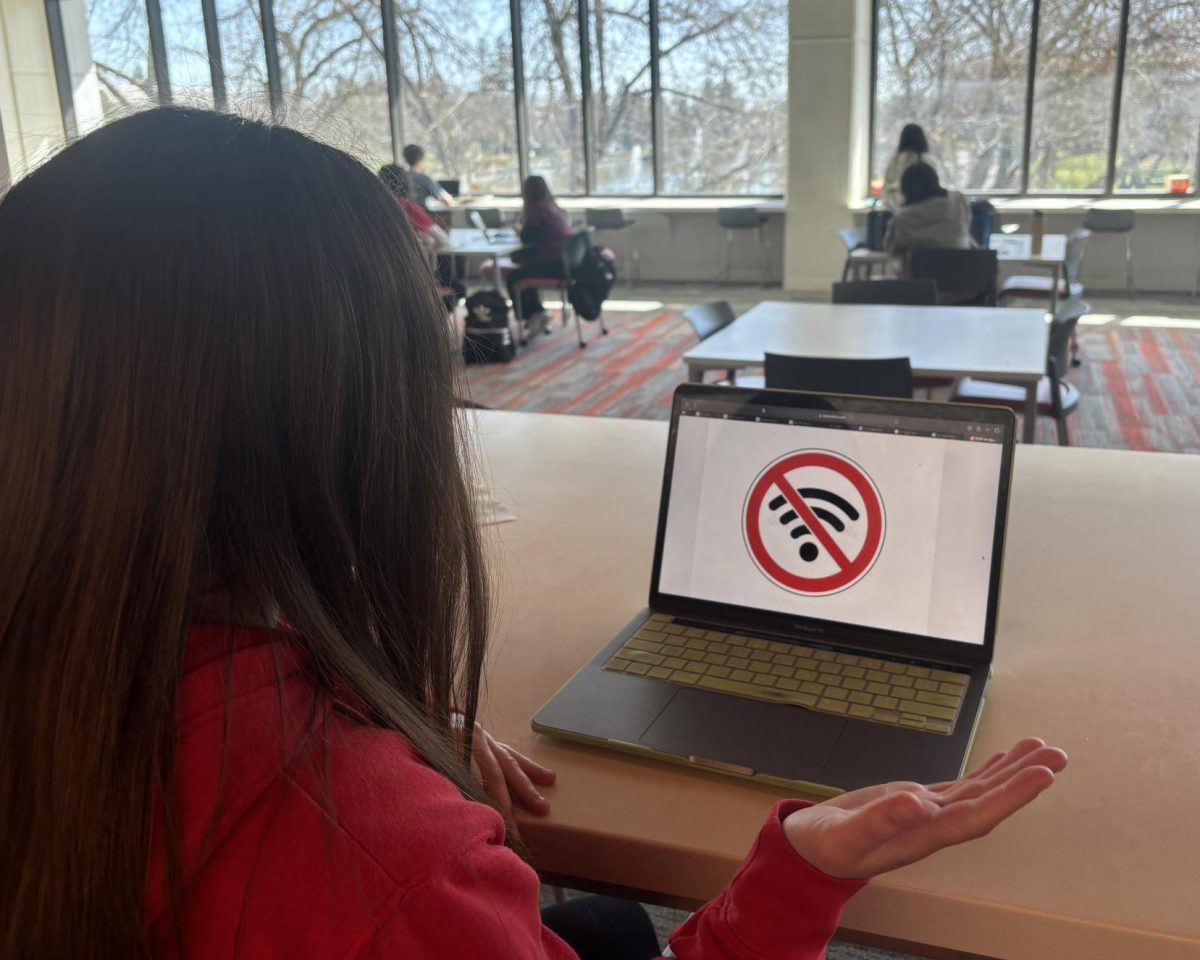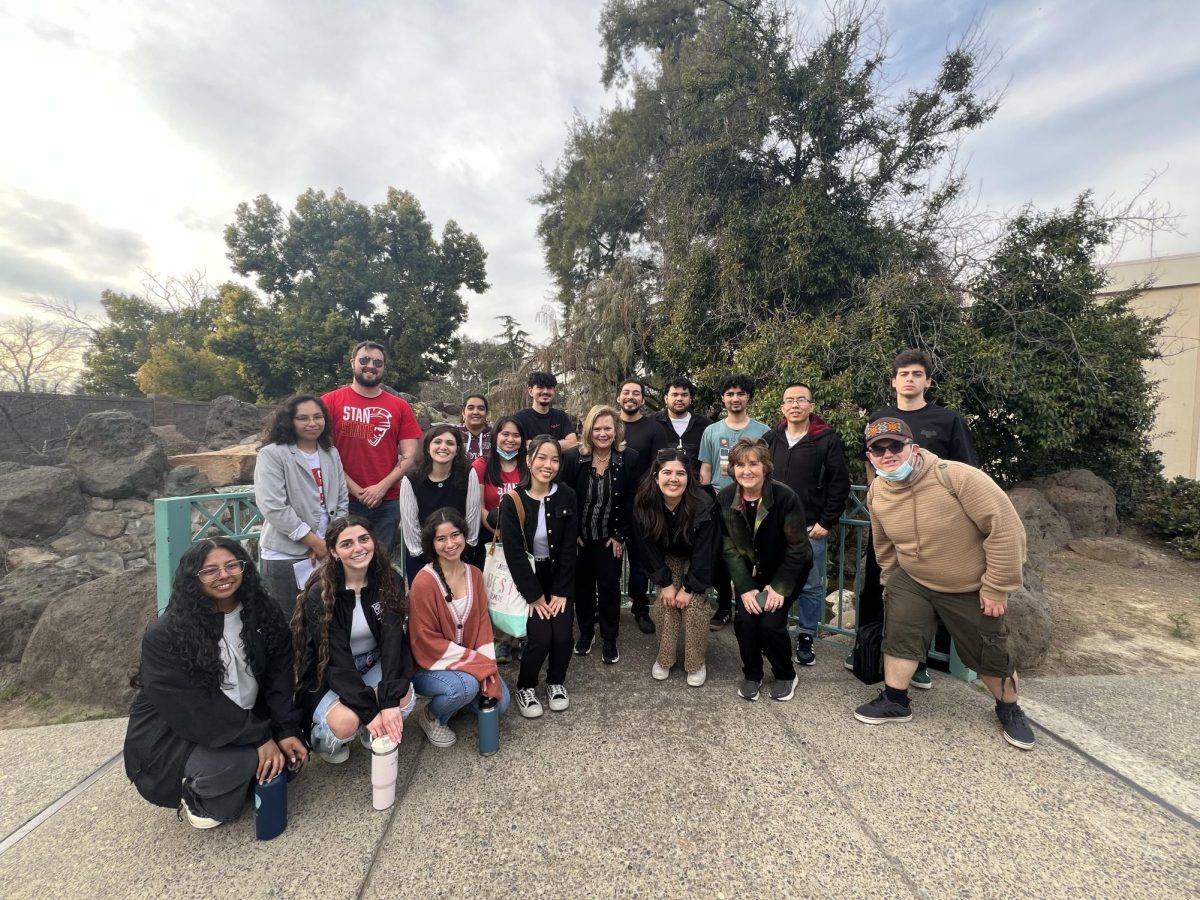According to San Francisco Bay Area-based art critic Mark Van Proyen, art criticism and art have been deteriorating and will continue on that way. During his lecture and discussion titled, “What Happened to Art Criticism,” presented on Feb. 20, at California State University, Stanislaus, Van Proyen analyzed and addressed the downward spiral of the art world.
“The short answer to my self-addressed question is this (…) overhead shot of an art fair,” Van Proyen said as he described the image of a building full of white walls with art hung up as far as the eye can see.
“And what an art fair is is basically a lot of commercial galleries get together and they rent out little cubicle spaces in these giant exhibition halls. The exhibition halls themselves might be three- or four-hundred thousand square feet, so they might pack two- or three-hundred galleries into these things.”
These conditions provide art shoppers with the opportunity to look at thousands of works in one fair and then thousands more in another fair during the same weekend. It allows art collectors or shoppers the chance to find pieces, to buy them and flip the piece for a profit or donate them to a museum for a hefty tax deduction. Instead of art being cultural commentary, it’s being used for monetary gain.
“To see something as art requires something the eye cannot descry– an atmosphere of artistic theory, a knowledge of the history of art: an artworld,” Arthur Danto wrote in his 1964 essay. Hand in hand with this quote shared by Van Proyen is the institutional theory of art; if a piece has been designated as a work of art by a representative of the “artworld”, it is a work of art. In Danto’s eyes a representative of the “artworld” was an art critic, an art curator, or sometimes an artist.
From that moment on, the empowerment to designate a work of art shifted from art critics into the hands of institutions causing art criticism to decline. Following this, a new theory of art was introduced, and the shift in quality and quantity can be observed as having flip-flopped. More and more is considered art and less and less is given to constructively guide these artists. Van Proyen made it clear when asked if any contemporary art was fascinating to him that he was not impressed by anything from the past decade.
“You can’t tell what art is anymore unless you have a lot of intellectual baggage backing it up,” Van Proyen said. “There’s now a world of regulated experience that happens through art fairs, through big museums, small museums and also through entities that are called international biennials.”
Categories:
Death of Criticism: monetization of art threatens art quality
By Jessica Horner
•
March 2, 2015
0
Donate to Signal
Your donation will support the student journalists of California State University, Stanislaus. Your contribution will allow us to purchase equipment and cover our annual website hosting costs.
More to Discover

